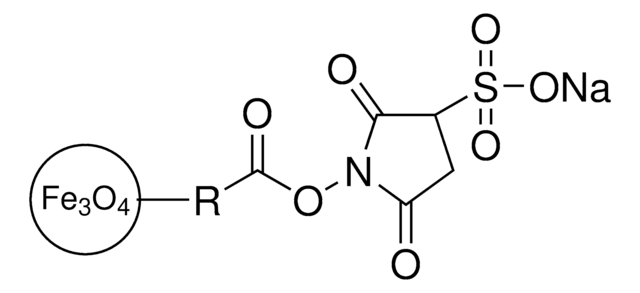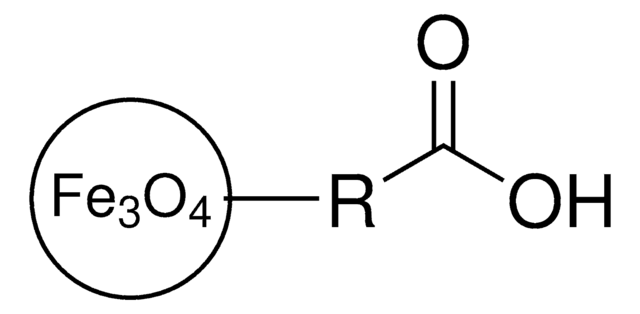推荐产品
应用
Iron oxide nanoparticles exhibit biocompatibility and non-toxicity and are used as magnetic resonance imaging contrast agent, gene carrier for gene therapy, therapeutic agent for hyperthermia-cased cancer treatment, magnetic sensing probe for in-vivo diagnostics and target specific drug delivery.
储存分类代码
11 - Combustible Solids
WGK
WGK 2
法规信息
新产品
Xianglong Hu et al.
Dalton transactions (Cambridge, England : 2003), 44(9), 3904-3922 (2015-01-13)
Responsive polymeric assemblies and hybrid superstructures fabricated from stimuli-sensitive polymers and inorganic nanoparticles (NPs) have been the subject of extensive investigations during the past few decades due to their distinct advantages such as an improved water solubility, stimuli-responsiveness, excellent biocompatibility
Joan Estelrich et al.
International journal of molecular sciences, 16(4), 8070-8101 (2015-04-14)
In this review, we discuss the recent advances in and problems with the use of magnetically-guided and magnetically-responsive nanoparticles in drug delivery and magnetofection. In magnetically-guided nanoparticles, a constant external magnetic field is used to transport magnetic nanoparticles loaded with
Jin Xie et al.
Theranostics, 2, 122-124 (2012-01-31)
This theme issue provides a timely collection of studies on magnetic nanoparticle-based imaging, bio-sensing, therapy and/or their combinations.
商品
Nanoparticle imaging agents enable stem cell tracking via various in vivo imaging techniques.
Professor Hui Mao explores the use of superparamagnetic iron oxide nanoparticles (INOPs) that offer an alternate contrast-enhancing mechanism.
Prof. Yadong Yin discusses various synthesis methods of magnetite nanocrystals and their applications in different fields.
我们的科学家团队拥有各种研究领域经验,包括生命科学、材料科学、化学合成、色谱、分析及许多其他领域.
联系技术服务部门


